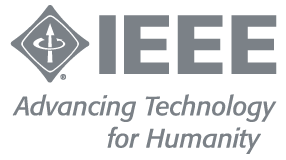
A virtual team is a geographically distributed team or remote team. It usually refers to a group of individuals who work together from different geographic locations and rely on communication technology such as email, video conferencing services, distributed file systems or CMS in order to collaborate.
While virtual teams are becoming more popular every day, keeping a team culture and addressing productivity demands require additional effort for both leaders and team members.
We recently met Peter Ivanov to discuss about virtual teams. Mr. Ivanov is considered an expert of the topic and is the author of book “Virtual Power Teams”.
Mr. Ivanov - Working for a large multinational you discovered the potential of diverse international teams. How did you develp your method for virtual leadership and virtual team building?
My method is purely based on my 25 years practice leading international teams – learning from my mistakes and victories. I had the chance to lead large international teams with 100+ people – spread across multiple continents, time zones and cultures. Initially I had managed projects, and then departments spread in Europe, Middle East and Africa. In the last 5 years as a coach, I supported companies from various industries and sizes. From all these experiences I’ve learned and constantly updated my methodology. It comprises the 10 Big Rocks, which are the 10 Success factors for retaining the gravity despite the distance and unleashing the team power. What makes me passionate about the method is that is works e.g. we delivered a 2-year project involving 20 countries in Europe, 3 months earlier and saved 250,000 EUR.
My method is purely based on my 25 years practice leading international teams – learning from my mistakes and victories. I had the chance to lead large international teams with 100+ people – spread across multiple continents, time zones and cultures. Initially I had managed projects, and then departments spread in Europe, Middle East and Africa. In the last 5 years as a coach, I supported companies from various industries and sizes. From all these experiences I’ve learned and constantly updated my methodology. It comprises the 10 Big Rocks, which are the 10 Success factors for retaining the gravity despite the distance and unleashing the team power. What makes me passionate about the method is that is works e.g. we delivered a 2-year project involving 20 countries in Europe, 3 months earlier and saved 250,000 EUR.
What is required by the remote, geographically dispersed team to achieve excellent performance?
A virtual team is like an atom where you have the nucleus and various particles flying around. In a virtual team we aim to retain the gravity despite the distance. It is the gravity between the team members (the particles) to the purpose and the goal of the team (the nucleus). In poorly led virtual teams the team members get lost in space and this impacts negatively the results. My method consists of 3 main parts:
- # Clarity – we deep dive into the individual personalities and their strengths, defining crystal clear who is the member of the team and what is the Team’s goal
- # Structured communication – often in poorly led virtual teams the manager calls the online conference only if a problem arises. On the contrary we establish a regular structured communication where everyone has a time slot and everyone can contribute and shine. Knowledge management is linked to individual strengths and feedback is regularly institutionalized.
- # Optimal culture – with lots of recognition and appealing prize we establish the optima virtual culture based on the bouquet of nationalities existing in the team.
 |
| Peter Ivanov |
In global as well as local companies it is becoming common to work with people of different age and cultural background. How can enterprises effectively support and benefit from this diversity?
Having team members from different cultures is challenging, particularly if manager is limited used to manage the cultural conflicts that certainly arise. However it is a tremendous opportunity as well. It is proven by various researches that gender and culture diverse teams deliver significantly better results. In my workshops we consciously chose the Optimal team culture on 3 scales – Learning, Deciding and Disagreeing, as defined by Erin Meyer in her book “The culture map”.
For example the leading scale distinguish between – hierarchical and egalitarian cultures. In the former there is a big distance between the boss and the team members: you ask for permission before acting, there is seating order etc. In the latter you are expected to take initiative and act based on pre-agreed vision and objectives. The team consciously picks the optimal team position on the scale and each team member reflects and agrees - what does it mean for me to actively support the chosen culture.
With the progress of globalization increases the necessity of remote leadership and virtual team building. What will be the importance of virtual teams in the Future?
According to Forrester Research, 81% of the teams globally are virtual i.e. have team members in different locations. 60% of them are in different time zones. Working virtually is a growing trend. The underlying trends are - increased home office workers, use of flexible workforce and releasing office space in favour of coworking spaces. I think companies regardless of their size can gain significant benefits if then can unite their people despite the distance. They can work with the best experts in the world without having to relocate them, expand geographically and conquer new markets. It is my mission to unite people in different locations and from various cultures and I am honored having the opportunity to work with various multinationals, SMEs, fast growing startups and even NGOs. Ability to work with the best experts and achieve the same level of gravity as in local teams, will unlock tremendous opportunities for the business, education and society.
Interview provided by Peter Ivanov, author of the book “Virtual Power Teams”

















